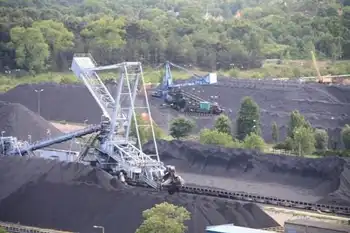Florida urged to give renewables a chance
By St. Petersburg Times
Substation Relay Protection Training
Our customized live online or in‑person group training can be delivered to your staff at your location.

- Live Online
- 12 hours Instructor-led
- Group Training Available
Yet, most serious discussions of renewable energy's future in Florida are short-circuited by two words: "If only.Â…"
If only the right regulatory framework was in place, then Florida could have more renewable energy, some say. If only renewable power didn't cost electric ratepayers so much.Â… If only renewables could be built to the scale of multi-megawatt generating stations.Â…
If only we stopped coming up with excuses, we really could have a burgeoning renewable-energy industry.
In Florida, the reality is that both the power generation industry and policymakers often spend more time talking about the obstacles to renewable energy than laying out strategies and deadlines for actually achieving any goals.
In the meantime, nothing gets accomplished. According to the U.S. Energy Information Administration, the share of Florida's electrical power supply that comes from renewable sources actually dropped from 2.9 percent in 1998 to 2 percent in 2008.
Why is that?
The truth is that renewable energy in Florida is shackled by outdated rules that protect established interests and prevent independent power entrepreneurs from competing fairly in the marketplace. Here's how:
The supply of electricity in Florida is dominated by the state's investor-owned utilities, which control nearly 90 percent of the market for generation and distribution. The rest of the state's electric power — about 10 percent — is supplied by local government-owned municipal utilities, electric cooperatives and by a small number of independent power producers.
For fuel, the investor-owned utilities, municipal utilities and the co-ops rely virtually 100 percent on sources that lie beyond Florida's borders: coal, natural gas, oil and uranium.
It is the independent power producers who generate most of state's renewable electricity, using fuel that Florida already has in its possession. Among those already up and running:
• Florida's 11 waste-to-energy plants — including the Pinellas County Resource Recovery Facility — turn garbage into more than 535 megawatts MW of electricity, enough to power more than 400,000 homes.
• Florida Crystal's Okeelanta facility, in Pahokee, combusts residual sugarcane fiber and urban wood waste to produce 140 MW, making it the largest biomass power plant in North America.
• Georgia-Pacific Corp. in Palatka 58 MW, Rayonier Inc. in Fernandina Beach 20 MW and Buckeye Technology 50 MW use wood waste as fuel to generate electricity to run their forest products mills.
Today, any independent power producer - like my company, Covanta Energy - seeking to build or expand renewable power in Florida must first run the gantlet of a pricing formula that mandates what investor-owned utilities will pay for independently produced electricity. It's called the "avoided cost" formula.
"Avoided cost" is governed by state regulators, but because of the expertise and massive legal resources deployed by the investor-owned utilities in Tallahassee, the utilities have been able to manipulate the formula over the years. The result: The utilities today pay far less for renewable energy than they contractually agreed to pay 20 years ago for this same power, while charging consumers far more.
Nominally, the "avoided cost" rules are meant to ensure that ratepayers get electricity at the lowest possible cost, but both the calculation and application of these rules actually has the opposite effect. At the same time, these rules serve to eliminate free-market competition, preventing anyone except the utility companies from producing power, thereby effectively killing the renewable energy market. The tragedy is that this behavior prevents the citizens of Florida from realizing the many environmental and economic benefits derived from renewable electricity generation.
Florida's renewable energy industry does not need a government subsidy. All renewable and independent power producers want is the right to compete on a level playing field. As it stands today, the marketplace in Florida is closed.
And there's no excuse for that.











